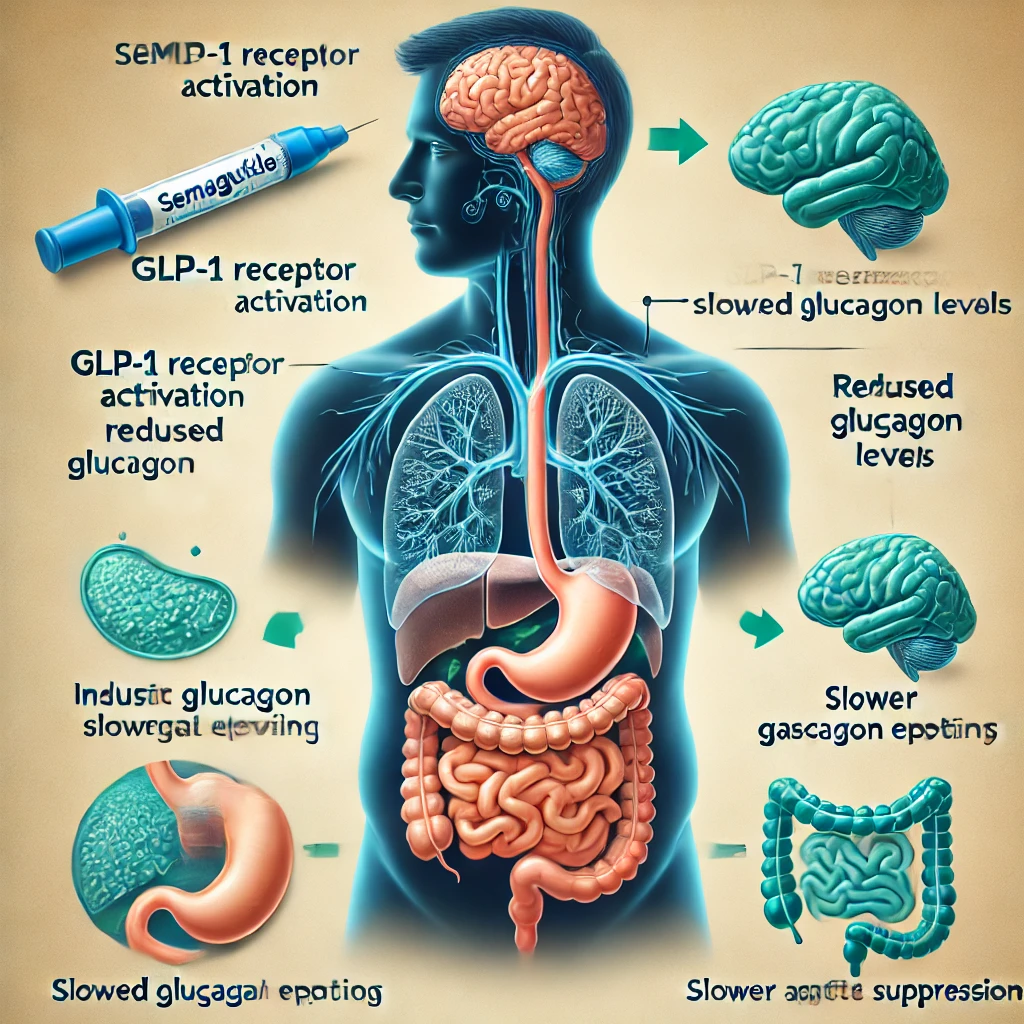Semaglutide is rapidly gaining recognition as a revolutionary treatment in both diabetes management and weight loss. This medication, belonging to the GLP-1 receptor agonists class, offers a unique approach to controlling blood sugar levels and aiding weight reduction. In this comprehensive guide, we will delve deep into how semaglutide works, its benefits, and why it has become a preferred choice for many healthcare providers and patients alike.
Understanding Semaglutide: The Basics
Before diving into how semaglutide works, it’s essential to understand what semaglutide is. Semaglutide is a synthetic version of the GLP-1 (glucagon-like peptide-1) hormone that our bodies naturally produce. This hormone plays a critical role in regulating blood sugar levels, making it particularly valuable for individuals with type 2 diabetes. Semaglutide, when administered, mimics the natural GLP-1 hormone, but with enhanced efficacy, making it a powerful tool in managing both diabetes and obesity.
The Mechanism of Action: How Semaglutide Works

One of the primary reasons semaglutide is so effective is its multifaceted mechanism of action. Here’s a closer look at how semaglutide works:
GLP-1 Receptor Activation
- The primary way semaglutide works is by activating GLP-1 receptors found in various parts of the body, including the pancreas and the brain. When these receptors are activated, it leads to several beneficial effects, such as increased insulin secretion and reduced glucagon release. This is particularly important for individuals with type 2 diabetes, as it helps lower blood sugar levels, especially after meals.
Insulin Secretion Enhancement
- One of the critical aspects of how semaglutide works is its ability to enhance insulin secretion from the pancreas. After eating, blood sugar levels naturally rise, and the pancreas responds by releasing insulin to help lower these levels. Semaglutide enhances this response, ensuring that blood sugar levels remain within a healthy range.
Reduction of Glucagon Secretion
- Another crucial factor in how semaglutide works is its ability to reduce the secretion of glucagon, a hormone that typically raises blood sugar levels by signaling the liver to release stored glucose. By inhibiting glucagon secretion, semaglutide prevents unnecessary spikes in blood sugar, contributing to more stable glucose levels throughout the day.
Slowing Gastric Emptying
- Semaglutide also plays a role in slowing gastric emptying, which means that food leaves the stomach more slowly. This delay in digestion is a significant aspect of how semaglutide works, as it leads to a slower and more controlled release of glucose into the bloodstream. This process helps prevent rapid spikes in blood sugar levels after meals, contributing to better overall glycemic control.
Appetite Suppression
- Beyond its effects on blood sugar, semaglutide is also highly effective in reducing appetite. By acting on specific receptors in the brain, semaglutide helps individuals feel fuller for longer periods, reducing overall calorie intake. This appetite suppression is a crucial component of how semaglutide works, especially in the context of weight loss. Many patients report significant reductions in food cravings and a greater ability to stick to a healthy diet.
Semaglutide for Weight Loss: A Dual Benefit
While semaglutide was initially developed for diabetes management, it has also been approved for weight loss under the brand name Wegovy. The dual benefit of controlling blood sugar and aiding in weight reduction is a testament to how semaglutide works on multiple levels. Clinical trials have shown that semaglutide can lead to significant weight loss, making it a valuable option for individuals struggling with obesity, even if they do not have diabetes.
The effectiveness of semaglutide in promoting weight loss further highlights how semaglutide works as a comprehensive treatment option. By reducing appetite and slowing gastric emptying, semaglutide helps patients consume fewer calories while still feeling satisfied. This dual action on blood sugar and weight makes semaglutide a unique and powerful tool in modern medicine.
For those starting their semaglutide journey, you may find valuable advice in 10 Semaglutide Tips and Tricks for Starters, which offers practical guidance on how to maximize the benefits of semaglutide.
How Semaglutide Works for Long-Term Health
The long-term benefits of semaglutide extend beyond immediate blood sugar control and weight loss. Understanding how semaglutide works can help individuals appreciate the potential it holds for improving overall health outcomes. For instance, better glycemic control reduces the risk of diabetes-related complications such as cardiovascular disease, kidney damage, and nerve damage. Additionally, weight loss associated with semaglutide can lead to improvements in conditions such as high blood pressure, sleep apnea, and joint pain.
The ability of semaglutide to address both blood sugar levels and weight makes it a comprehensive approach to managing type 2 diabetes and obesity. As more individuals learn how semaglutide works, it is likely that its use will continue to expand, benefiting a broader population of patients.
Explore more about how semaglutide contributes to long-term weight management by reading our detailed post on the STEP 5 Trial, which showcases the sustained benefits of this treatment.
Potential Side Effects and Considerations
While semaglutide is generally well-tolerated, it is important to be aware of potential side effects. Understanding how semaglutide works includes recognizing that, like any medication, it may cause side effects such as nausea, vomiting, or diarrhea, particularly when starting the treatment. However, these side effects typically diminish as the body adjusts to the medication.
For further insights into managing side effects and optimizing treatment, check out our guide on managing GLP-1 medications effectively.
It’s also beneficial to stay informed about the latest research and updates, such as Zappy Health’s weight loss strategies.
It is also crucial to consult with a healthcare provider to determine if semaglutide is the right option for you. Knowing how semaglutide works can help you have informed discussions with your healthcare provider about whether this medication aligns with your health goals and needs.
Conclusion: The Future of Semaglutide
As research continues and more is understood about how semaglutide works, it is clear that this medication represents a significant advancement in the treatment of type 2 diabetes and obesity. Its ability to mimic natural GLP-1 hormones while offering enhanced effects on blood sugar control and weight management makes it a valuable option for many patients.
Whether you are managing type 2 diabetes, seeking to lose weight, or both, understanding how semaglutide works can empower you to make informed decisions about your treatment options. The future of semaglutide looks promising, with ongoing studies exploring its potential uses and benefits across various health conditions.
For those considering semaglutide, it’s important to consult with your healthcare provider and learn more about how semaglutide works to see if it’s the right fit for your health journey. With its proven efficacy and growing popularity, semaglutide is poised to remain a cornerstone of diabetes and weight management strategies for years to come.
To explore more about treatment options, including semaglutide, you can also visit Zappy Health’s blog. Additionally, for broader information on managing diabetes and obesity, sites like Mayo Clinic and WebMD offer valuable resources for those looking to deepen their understanding of these conditions.



